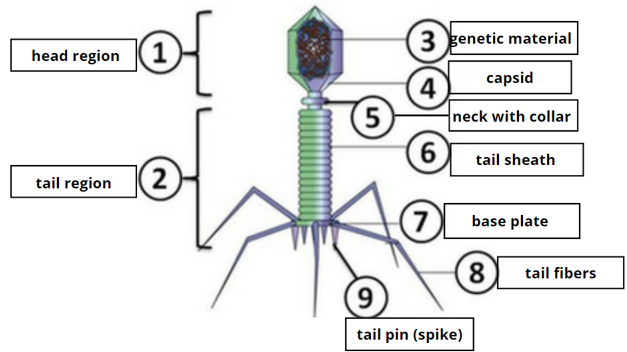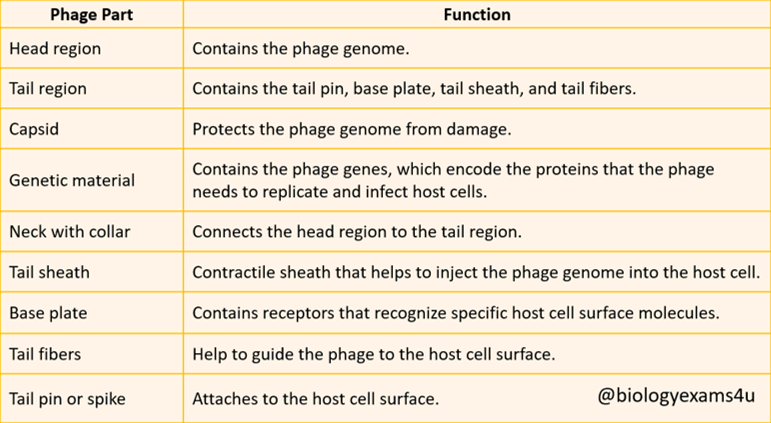What are bacteriophages?
The word
"bacteriophage" literally means "bacteria eater," because
bacteriophages destroy their host bacterial cell
Bacteriophages
are viruses that infect bacteria. They are highly specific for their host
bacteria, and they can be used to treat bacterial infections. Bacteriophage
therapy is a promising new approach to treating antibiotic-resistant bacteria.
How Bacteriophage causes bacterial cell lysis? Watch our Animated video here
- The head region contains the phage genome. It is a polyhedral structure that is made up of protein subunits.
- The tail region contains the tail pin, base plate, tail sheath, and tail fibers. It is a long, slender structure that is attached to the head region.
- The neck with collar is a short structure that connects the head region to the tail region. It contains proteins that help to control the injection of the phage genome into the host cell.
- The genetic material contains the phage genes, which encode the proteins that the phage needs to replicate and infect host cells. The genetic material can be either DNA or RNA.
- The capsid is a protein shell that encloses the phage genome. It protects the genome from damage from the environment and from the host cell's immune system.
- The tail sheath is a contractile sheath that surrounds the tail core. When the base plate binds to the host cell receptors, the tail sheath contracts, injecting the phage genome into the host cell.
- The base plate is a hexagonal structure that contains receptors that recognize specific host cell surface molecules. Once the tail pin has attached to the host cell surface, the base plate binds to the host cell receptors.
- The tail pin or spike is a long, thin protein that protrudes from the base plate of the phage. It is the first part of the phage to contact the host cell surface.
- The tail fibers are long, thin proteins that protrude from the base plate. They help to guide the phage to the host cell surface and to position the base plate so that it can bind to the host cell receptors.
Test your Knowledge: Bacteriophage Quiz
A great way to thank and support us.
- Visit our TPT store by clicking here.
- Download free resources or purchase worksheets on Bacteriophage.
- Please rate the product and follow us on store.
Thank you so much
Tags:
bacteriophage
bacteriophage animation
Bacteriophage Structure and function
basic microbiology notes
Microbiology Notes


